Natural Mood Support During Seasonal Affective Disorder (SAD)
Introduction
When the days get shorter and sunlight fades, many people notice their energy, motivation, and mood begin to dip. This isn’t just “winter blues.” For some, it’s a condition known as Seasonal Affective Disorder (SAD) — a type of depression linked to changes in light exposure and circadian rhythm.
The good news? Nature offers powerful tools to help rebalance mood and vitality during darker months. From light therapy and targeted supplements to breathwork, movement, and nutrition, it’s possible to support your body and mind naturally — and even rediscover calm and joy in winter’s quiet rhythm.
Let’s explore the science behind SAD and the best evidence-based strategies to manage it naturally 🌿
Looking for supplements for Brain Fog? Click here.
🌧️ What Is Seasonal Affective Disorder?
Seasonal Affective Disorder is a form of recurrent depression that typically occurs during the fall and winter months. It’s estimated to affect about 5% of adults, with women being diagnosed more often than men.
🌬️ Common Symptoms
Persistent sadness or irritability
Low energy and fatigue
Oversleeping or difficulty waking up
Increased appetite (especially for carbs and sugar)
Loss of interest in activities
Difficulty concentrating
Social withdrawal
Symptoms usually begin as daylight hours decrease — around late fall — and fade as spring approaches.
💡 Why It Happens
The main trigger is reduced sunlight, which disrupts your:
Circadian rhythm (your internal body clock)
Serotonin production (mood-regulating neurotransmitter)
Melatonin levels (sleep hormone)
This biochemical imbalance can leave you feeling sluggish, sad, and unmotivated.
🌞 The Role of Light in Mood Regulation

Light doesn’t just help us see — it directly influences our brain chemistry and emotional state.
🧠 How Sunlight Affects the Brain
Increases serotonin: Natural light exposure boosts serotonin, improving mood and focus.
Regulates melatonin: Morning light helps suppress melatonin, signaling your brain to wake up.
Aligns circadian rhythm: Consistent light exposure keeps your biological clock stable.
When sunlight decreases in winter, serotonin levels can drop while melatonin levels rise — leading to fatigue, low mood, and oversleeping.
💡 Light Therapy
Light therapy is considered the gold standard non-pharmacological treatment for SAD.
How It Works
A 10,000-lux light box mimics natural daylight. Sitting in front of it for 20–30 minutes each morning helps:
Reset your circadian rhythm
Increase serotonin production
Boost alertness and energy
Pro Tips
Use within 1 hour of waking up.
Keep it at arm’s length and angled slightly downward.
Avoid looking directly into the light.
Consistency matters — use it daily from fall through spring.
🕯️ Bonus: Combine light therapy with grounding morning rituals — hydration, stretching, or journaling — to set a balanced tone for the day.
🍎 Nutrition for Seasonal Mood Support
What you eat directly impacts your neurotransmitters and inflammation levels — two major factors in seasonal mood changes.
🧠 Eat to Nourish Your Brain
Winter cravings often pull us toward comfort foods high in sugar and carbs, but these cause blood sugar crashes that worsen mood. Instead, focus on:
🌿 Mood-Boosting Nutrients
Omega-3 Fatty Acids (EPA & DHA): Support serotonin receptors and reduce inflammation.
B Vitamins (especially B6, B9, B12): Crucial for neurotransmitter synthesis.
Magnesium: Calms the nervous system and supports stress resilience.
Vitamin D: Compensates for reduced sunlight; key for serotonin regulation.
Tryptophan: An amino acid precursor to serotonin (found in turkey, eggs, oats, and nuts).
🥗 Example Winter Mood Plate
Grilled salmon 🐟 (omega-3s)
Roasted sweet potatoes 🍠 (complex carbs)
Spinach and pumpkin seeds 🌿 (magnesium + B vitamins)
A drizzle of olive oil 🫒 (healthy fats)
💬 Tip: Stay hydrated! Dehydration in cold weather is common and can worsen fatigue.
💊 Natural Supplements for SAD
Certain supplements can help replenish what’s missing during winter months and support emotional balance.
🌞 Vitamin D: The Sunshine Nutrient
Low vitamin D levels are strongly linked to SAD. Because sunlight triggers vitamin D synthesis, levels often plummet in winter.
Benefits:
Boosts serotonin and dopamine activity
Reduces fatigue and brain fog
Supports immune health
Dosage:
1000–4000 IU daily (depending on deficiency and body weight)
Take with healthy fats for better absorption
💡 Pro Tip: Test your 25(OH)D blood levels before supplementing — optimal range is 40–60 ng/mL.
🧠 Omega-3 Fatty Acids
Omega-3s help reduce neuroinflammation and balance mood-related neurotransmitters.
Evidence: Multiple studies show EPA-rich omega-3s significantly reduce depressive symptoms — especially in people with inflammation-linked depression like SAD.
Dosage:
1000–2000 mg/day (EPA + DHA combined)
Choose fish oil or algae-based omega-3 (vegan option).
🐠 Pair it with breakfast to reduce fishy aftertaste.
💛 B-Complex Vitamins
B vitamins are critical for energy metabolism and neurotransmitter synthesis. Low B12 or folate can mimic or worsen depression.
Benefits:
Supports serotonin, dopamine, and GABA balance
Reduces stress reactivity
Enhances energy and motivation
Dosage:
Take one balanced B-complex capsule daily with breakfast.
🌿 Adaptogens: Nature’s Stress Buffers
Adaptogens help the body handle emotional and physical stress, making them perfect allies during winter mood dips.
Best options:
Ashwagandha: Lowers cortisol and promotes calm.
Rhodiola Rosea: Increases energy and reduces fatigue-related sadness.
Holy Basil (Tulsi): Supports emotional stability and focus.
🧘 Best for: People who feel both mentally tired and emotionally overwhelmed during winter.
🌼 Magnesium
Often called the “relaxation mineral,” magnesium supports over 300 biochemical processes, including neurotransmitter regulation.
Benefits:
Calms anxiety
Improves sleep quality
Reduces muscle tension
Dosage:
200–400 mg magnesium glycinate or threonate daily.
🌙 Take it before bed for better sleep and relaxation.
🌸 St. John’s Wort (Hypericum perforatum)
One of the most researched herbs for mild to moderate depression, St. John’s Wort may help alleviate seasonal mood changes.
Mechanism:
Increases serotonin, dopamine, and norepinephrine availability.
Dosage:
300 mg (standardized to 0.3% hypericin) three times daily.
⚠️ Important: Do not combine with antidepressants or birth control pills — it may reduce their effectiveness.
🌿 Curcumin
Curcumin, the active compound in turmeric, reduces neuroinflammation and supports serotonin production.
Dosage:
500–1000 mg curcumin with piperine daily.
✨ Pairs well with Omega-3s for synergistic anti-inflammatory support.
Looking for supplements for Brain Fog? Click here.
🌬️ Breathwork for Emotional Balance
Your breath is a built-in tool for regulating mood. During winter, when energy dips, breathwork helps stimulate the vagus nerve, which promotes calm and emotional resilience.
🌫️ Try This Simple Morning Breath Routine
Sit comfortably with your back straight.
Inhale slowly through your nose for 4 seconds.
Hold for 2 seconds.
Exhale slowly through your mouth for 6 seconds.
Repeat for 3–5 minutes.
This activates the parasympathetic nervous system, balancing cortisol and promoting emotional stability.
🧘 Bonus: Practice near a window with morning sunlight — the combination of light and breath signals your brain to “wake up” emotionally and physically.
Want to try Breathwork? Click Here.
🧘 Movement and Mind-Body Practices
Exercise is one of the most effective natural treatments for SAD — it increases serotonin, endorphins, and BDNF (a brain growth factor linked to happiness).
🚶 Best Winter-Friendly Exercises
Brisk walking: Especially outdoors, even for 20 minutes.
Yoga or Pilates: Regulates nervous system and reduces stress.
Dance or low-impact cardio: Elevates dopamine and energy.
💪 Tip: Exercise early in the day to boost circadian rhythm and improve sleep.
🧠 Sleep and Circadian Rhythm Support
Shorter days and longer nights can confuse your internal body clock. To maintain balance:
🌙 Sleep Hygiene Tips
Wake up and go to bed at consistent times.
Use a dawn simulator alarm clock for gradual morning light.
Avoid blue light from screens 1–2 hours before bed.
Keep your bedroom cool, dark, and quiet.
🧡 If you nap, keep it under 30 minutes and before 3 PM.
💬 Therapy and Emotional Support

SAD affects both the body and the mind — which is why combining physical treatments with emotional support is key.
🪞 Therapeutic Approaches That Help
Cognitive Behavioral Therapy (CBT): Focuses on challenging negative winter-related thoughts and routines.
Mindfulness-Based Cognitive Therapy (MBCT): Helps you observe your thoughts without judgment.
Light + Talk Therapy Combo: Clinical studies show this pairing improves outcomes more than either alone.
💭 Remember: It’s normal to need extra support during darker months — reaching out is a sign of strength, not weakness.
Looking for online therapy ? Click Here.
☀️ Morning Routine for SAD Relief
Building a structured morning routine helps reset your energy and mood daily.
🌅 Example Morning Flow
Open curtains immediately — let natural light in.
Light therapy box for 20–30 minutes.
Breathwork or meditation (5–10 minutes).
Take supplements with a nourishing breakfast.
Move your body (yoga, stretch, or walk).
Listen to uplifting music or affirmations.
This morning “stack” signals safety and rhythm to your nervous system, helping your body counter the darkness outside.
🌿 Combining Supplements and Lifestyle for Maximum Effect
🌤️ Morning
Vitamin D3 + Omega-3 + B-Complex
Light therapy and hydration
Breathwork or gratitude journaling
🌙 Evening
Magnesium or Ashwagandha for relaxation
Herbal tea (chamomile or Tulsi)
Screen-free wind-down
🧩 Think of your daily routine as a biological symphony — each small habit plays its part in emotional harmony.
🌈 Emotional Resilience and Self-Compassion
Winter can test your patience — with yourself and the world. Instead of fighting it, learn to flow with the season.
Reflect and slow down 🕯️
Connect with friends or online communities 🫶
Create warmth with candlelight, cozy meals, and music
Practice gratitude journaling — focusing on small joys
🧘 SAD doesn’t define you. It’s a rhythm your body experiences — and one you can support with care, not force.
💡 Quick Natural Remedies for “Low Mood Days”
When you wake up feeling heavy or unmotivated, try these:
Step outside for 5 minutes of fresh air.
Drink water with lemon and sea salt to rehydrate.
Play an energizing playlist — music directly stimulates dopamine.
Do 10 deep breaths while visualizing light filling your body.
Sip green tea with L-Theanine for calm focus.
🌤️ Sometimes, small rituals can shift your emotional weather.
🪷 The Science Behind Natural Interventions
Scientific studies support the link between light, inflammation, and neurotransmitters in SAD:
Light exposure increases serotonin synthesis in the brain (Lam et al., J Psychiatry Neurosci, 2001).
Vitamin D deficiency correlates with higher depression risk (Jorde et al., J Clin Endocrinol Metab, 2008).
Omega-3s improve mood and reduce inflammation (Hibbeln, Lancet, 2001).
Exercise raises BDNF and endorphins, promoting neuroplasticity (Front Behav Neurosci, 2018).
CBT + light therapy has the strongest long-term outcomes for SAD (Am J Psychiatry, 2015).
🌞 These findings show that nature and lifestyle can work as potent medicine — when used consistently.
🧩 Real-World Case Example
Anna, a 34-year-old teacher, struggled with seasonal fatigue and sadness every winter. She started using:
Light therapy (30 minutes each morning)
2000 IU Vitamin D3 daily
Omega-3 + magnesium stack
Daily walks during lunch
Evening journaling + chamomile tea
Within three weeks, her energy improved. After six weeks, her sleep normalized and her mood stabilized.
💬 “I stopped fighting winter. Instead, I began nurturing myself through it.”
🌅 Building a Sustainable Winter Wellness Plan
You don’t need to do everything at once — small, consistent actions make the biggest impact.
Start with these 3 steps:
Get morning light exposure daily.
Take Vitamin D3 and Omega-3.
Move and breathe intentionally.
Once those habits feel natural, you can add adaptogens, therapy, or journaling.
✨ Over time, you’ll build an internal “sunlight” that carries you through every season.
💬 Key Takeaways
✅ Seasonal Affective Disorder is caused by light deprivation and circadian disruption.
✅ Natural remedies like light therapy, Vitamin D, Omega-3s, and breathwork can significantly improve mood.
✅ Combine supplements + lifestyle habits + therapy for best results.
✅ You can thrive in winter by creating a personalized rhythm of light, movement, and nourishment.
🌿 Even when sunlight fades, your inner light can grow stronger.
📚 References
Lam, R. W., et al. (2001). “The role of light in the treatment of seasonal affective disorder.” Journal of Psychiatry & Neuroscience, 26(5), 441–446.
Jorde, R., et al. (2008). “Effects of vitamin D supplementation on symptoms of depression.” Journal of Clinical Endocrinology & Metabolism, 93(2), 389–395.
Hibbeln, J. R. (2001). “Fish consumption and major depression.” The Lancet, 357(9272), 407–408.
Rohan, K. J., et al. (2015). “Cognitive-behavioral therapy vs. light therapy for SAD: A randomized trial.” American Journal of Psychiatry, 172(9), 862–869.
Panossian, A., & Wikman, G. (2009). “Evidence-based efficacy of adaptogens.” Phytotherapy Research, 23(6), 763–783.
Streeter, C. C., et al. (2012). “Effects of yoga and controlled breathing on anxiety and mood.” Journal of Alternative and Complementary Medicine, 18(5), 480–485.
Martiny, K., et al. (2018). “Adjunctive exercise as a treatment for depression.” Frontiers in Behavioral Neuroscience, 12(93).
Related Posts
-
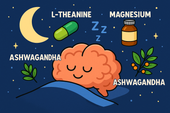
Nootropics That Promote Calm and Rest
Explore the world of calming nootropics — natural brain enhancers that promote relaxation, better focus, and deeper rest. Learn how L-Theanine, magnesium, ashwagandha, and other adaptogens help balance your nervous system, reduce stress, and support restorative sleep.
-
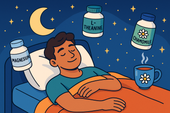
Best Natural Supplement Stack for Sleep
Discover the best natural supplement stack for deep, restorative sleep. Learn how nutrients like magnesium, L-theanine, glycine, and calming herbs such as chamomile and ashwagandha work together to relax your body, calm your mind, and improve sleep quality—naturally and safely.
-
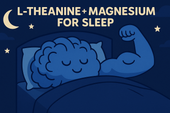
Combining L-Theanine and Magnesium for Sleep: A Calm Night, Naturally
Discover how combining L-Theanine and Magnesium can help you drift into deep, restorative sleep. Learn how this natural duo calms the mind, relaxes the body, and supports your nervous system—without grogginess the next morning.
-
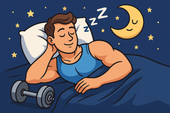
How to Sleep Better After Intense Workouts
Struggling to fall asleep after a tough workout? Learn how to optimize your post-training recovery with nutrition, hydration, and science-backed sleep strategies. Discover how to calm your nervous system, balance hormones, and wake up fully recharged for your next session.
-
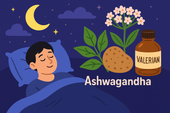
Ashwagandha and Valerian: A Bedtime Combo for Deep Rest and Emotional Reset
Discover the calming synergy of Ashwagandha and Valerian root, two natural sleep aids that help quiet the mind, ease anxiety, and promote deeper rest. Learn how this herbal duo supports the nervous system, balances stress hormones, and restores emotional peace — without next-day grogginess.
-
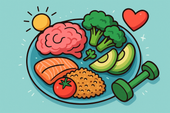
How to Create a Resilience-Boosting Diet
Discover how to build emotional and physical strength from the inside out with a resilience-boosting diet 🍎. Learn which foods stabilize your mood, how supplements like magnesium and omega-3s strengthen your stress response, and why pairing nutrition with breathwork and therapy creates lasting calm, focus, and vitality 🌿💪.
-
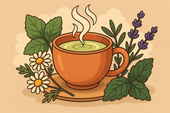
Best Teas and Herbal Blends for Calmness: Nature’s Way to Restore Inner Peace
Ashwagandha, the ancient adaptogenic herb, helps your body find balance during stress. Known as “Indian ginseng,” it supports cortisol regulation, boosts energy, and restores calm clarity. Discover how this powerful root promotes resilience, emotional balance, and steady vitality — one cup at a time. 🌸
-
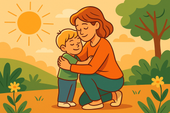
Parenting and Emotional Strength: How to Raise Children Without Losing Yourself
Empathy is the bridge that connects hearts — the quiet power to understand, feel, and support another’s emotions without judgment. Learn how empathy strengthens relationships, enhances communication, and cultivates deeper compassion in everyday life. 🌿
-
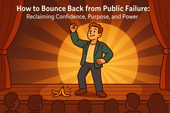
How to Bounce Back from Public Failure: Reclaiming Confidence, Purpose, and Power
Visualization is more than imagination — it’s brain training for resilience. By picturing calm, success, or healing, you activate the same neural pathways as real experience. Learn how daily visualization rewires your brain for confidence, emotional balance, and recovery from stress. ✨
-
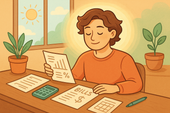
Coping with Financial Stress Through Resilience: How to Stay Grounded When Money Feels Tight
Body awareness is the foundation of emotional resilience. By tuning into your body’s signals — tension, fatigue, or calm — you learn to recognize stress before it overwhelms you. Discover how mindfulness, gentle movement, and breathwork can deepen your connection with your body and restore balance from the inside out. 🧘
-
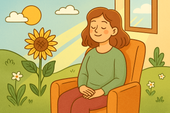
How to Stay Positive During Chronic Illness: A Guide to Emotional Strength and Hope
Creativity is more than art — it’s a form of healing. Whether through painting, writing, music, or small acts of expression, creativity helps release emotion, calm the nervous system, and reconnect you to joy. Discover how to use creativity as a tool for emotional balance, resilience, and self-discovery. 🌿
-
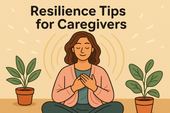
Resilience Tips for Caregivers: How to Stay Strong While Caring for Others
Joy isn’t the absence of pain — it’s the quiet strength to find light even in challenging times. Cultivating joy through small daily moments restores balance, releases stress, and reminds you of life’s beauty. Learn how to reconnect with authentic happiness, rebuild emotional energy, and nurture your nervous system through gratitude, presence, and play. 🌿
-
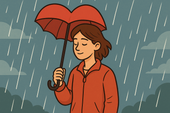
Building Resilience After a Breakup: How to Heal, Rebuild, and Rise Stronger
Social connection is one of the strongest predictors of emotional resilience. During difficult times, genuine relationships act as anchors — calming the nervous system, reducing stress hormones, and helping you regain perspective. Learn how cultivating real human connection can strengthen your mind, heart, and overall well-being. 🌿
-
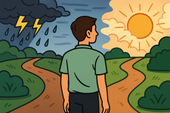
How to Stay Emotionally Strong During Job Loss
Your emotions are powered by brain chemistry — a delicate balance of neurotransmitters like serotonin, dopamine, and cortisol. When these chemicals work in harmony, you feel calm, focused, and resilient. Learn how daily habits, nutrition, and mindfulness can support your brain chemistry and boost emotional well-being naturally. 🌿
-
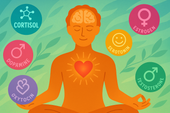
The Role of Hormones in Emotional Stability: How Your Chemistry Shapes Your Calm
Hormones shape more than your body — they shape your emotions, resilience, and sense of calm. From cortisol to serotonin, these chemical messengers influence how you react to stress, connect with others, and recover from challenges. Learn how to balance your hormones naturally to build lasting emotional stability and harmony within. 💫
-
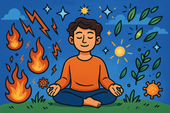
Mitochondria and Emotional Energy: The Cellular Power Behind Your Mood
Breathwork is one of the most powerful tools for emotional regulation and cellular balance. Through intentional breathing, you can calm your nervous system, increase oxygen flow to the brain, and even support mitochondrial energy. Learn how conscious breathing connects body and mind — transforming stress into presence and emotional strength. 🌿
-
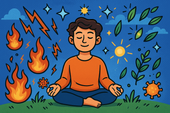
Inflammation and Its Impact on Mood Resilience: The Silent Link Between Body and Mind
Inflammation doesn’t just affect the body — it impacts the mind. Chronic inflammation alters brain chemistry, depletes serotonin, and makes emotional recovery harder. Learn how calming inflammation through nutrition, mindfulness, and sleep can restore balance, resilience, and a renewed sense of emotional strength. 💫
-
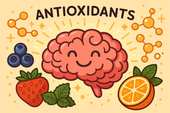
How Antioxidants Protect Emotional Well-being: The Hidden Link Between Oxidative Stress and Mental Health
Antioxidants do more than protect your body — they defend your mind. By neutralizing oxidative stress, antioxidants support serotonin, dopamine, and brain energy pathways that keep you calm, focused, and emotionally balanced. Discover how foods like berries, green tea, and dark chocolate nourish your brain, boost mood, and strengthen resilience from the inside out. 🌿✨
-
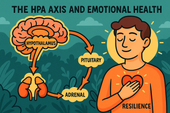
The HPA Axis and Emotional Health: The Hidden Bridge Between Stress and Mind
Neuroplasticity — the brain’s ability to rewire and adapt — is the foundation of emotional healing and resilience. When you face stress, trauma, or change, your neural pathways can reshape themselves to support new patterns of calm, focus, and self-awareness. Learn how daily practices like mindfulness, therapy, and breathwork strengthen neuroplasticity to transform emotional pain into personal growth. 🌸
-
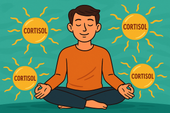
Why Cortisol Control Is Key to Resilience: Mastering Stress to Build Emotional Strength
Controlling cortisol — the body’s main stress hormone — is the secret to lasting resilience. When cortisol levels stay balanced, your mind becomes clearer, emotions steadier, and energy more sustainable. Learn how breathwork, mindset shifts, adaptogens, and daily rhythms can help you calm your stress response and build true inner strength. 🌞💪
-
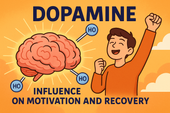
Dopamine’s Influence on Motivation and Recovery: Reigniting Drive and Balance
Healthy relationships are the foundation of emotional balance and resilience. Whether romantic, familial, or platonic, genuine connection releases dopamine, serotonin, and oxytocin — the brain’s “bonding trio” — helping us feel secure, motivated, and seen. Learn how trust, empathy, and communication not only strengthen your connections but also reshape your nervous system for deeper emotional well-being. 🌿🤝
-
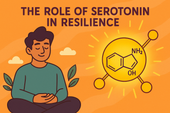
The Role of Serotonin in Resilience: How This “Mood Molecule” Shapes Emotional Strength
Serotonin — often called the “resilience molecule” — plays a vital role in how we handle stress, regulate mood, and recover from emotional challenges. Beyond happiness, this powerful neurotransmitter helps balance the gut-brain axis, stabilize the nervous system, and support emotional flexibility. Learn how nutrition, sunlight, mindfulness, and adaptogens can naturally boost serotonin and strengthen your emotional resilience. 🌞🧠
-
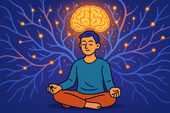
How Neuroplasticity Supports Emotional Growth: Rewiring the Brain for Resilience
Neuroplasticity is the brain’s built-in power to grow, adapt, and heal — and it’s the foundation of emotional transformation. Every mindful breath, compassionate act, or reframed thought strengthens new neural pathways that support resilience and self-awareness. Learn how your brain rewires through daily habits, helping you turn emotional challenges into opportunities for growth and calm. 🌿
-
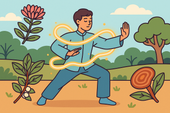
Tai Chi and Adaptogens for Mind-Body Balance: The Art of Harmonizing Energy and Resilience
Alchemy isn’t just an ancient science — it’s a timeless symbol of transformation and inner balance. By blending the physical and spiritual, alchemy teaches us that change begins from within. Just as metals are refined into gold, we too can transmute emotional pain, stress, and chaos into clarity and strength through mindful practice and self-awareness. 🌙✨
-
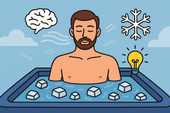
Cold Therapy and Emotional Control: Training the Mind Through the Body
Cold therapy isn’t just for athletes — it’s a tool for emotional mastery. By exposing your body to controlled cold, you train your nervous system to stay calm under stress, improving focus, mood, and resilience. This article explores the science of cold exposure, its impact on hormones and the vagus nerve, and how ice baths and cold showers can help you build emotional control, one breath at a time. 🧊🧘♂️
-
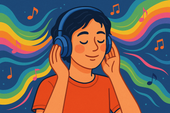
How Music Influences Emotional Recovery: The Healing Soundtrack of the Mind
Neuroplasticity — the brain’s ability to rewire and heal itself — is at the heart of emotional recovery. Through mindful habits, music, therapy, and consistent mental stimulation, your brain can form new connections that support resilience and well-being. Discover how neuroplasticity turns pain into growth, helping you rebuild balance, focus, and emotional strength. 🌿
-
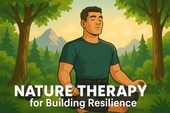
Nature Therapy for Building Resilience: Reconnecting With the Healing Power of the Earth
Nature therapy helps rebuild emotional resilience by reconnecting you with the healing rhythms of the Earth. From forest walks to sunlight exposure, nature restores balance to your nervous system, lowers stress hormones, and teaches emotional adaptability. Learn how spending time outdoors can enhance mental clarity, calm anxiety, and awaken your natural capacity to heal. 🌞
-
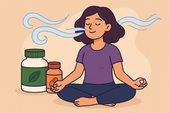
Breathwork Techniques That Pair with Supplements: The Ultimate Synergy for Stress Relief and Mental Clarity
Breathwork and supplements create a powerful mind-body synergy for stress relief, focus, and energy. By combining intentional breathing with adaptogens, nootropics, and calming nutrients, you can naturally regulate cortisol, sharpen mental clarity, and boost emotional balance. This guide explores the best breathwork techniques and supplement pairings to help you feel centered, calm, and energized from the inside out. 🌿
-
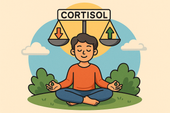
Why Cortisol Balance Matters for Emotional Strength
Balancing cortisol — your body’s main stress hormone — is essential for emotional resilience. When cortisol is chronically high, your mind stays stuck in survival mode, leading to fatigue, anxiety, and emotional instability. This article explores how nutrition, supplements, breathwork, and therapy can help restore healthy cortisol rhythms, regulate the nervous system, and strengthen your ability to handle life’s challenges with calm focus and emotional strength. 🌿
-
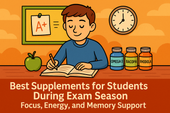
Best Supplements for Students During Exam Season: Focus, Energy, and Memory Support
Studying late into the night? Learn which natural supplements can boost focus, memory, and mental stamina during exam season — without the crash. From omega-3s to Bacopa and Rhodiola, discover your brain’s ultimate exam support stack. 🎓🧠
-
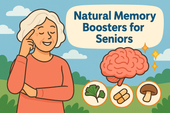
Natural Memory Boosters for Seniors: How to Keep Your Mind Sharp and Focused
Stay mentally sharp and confident as you age. Discover science-backed natural supplements and lifestyle habits that boost memory, focus, and brain longevity for seniors. 🌿🧠
-
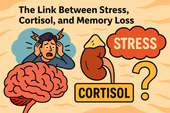
The Link Between Stress, Cortisol, and Memory Loss
Chronic stress can quietly erode your memory — and cortisol is the key culprit. Learn how stress hormones affect the brain, why the hippocampus shrinks under pressure, and how natural strategies can help you restore memory and mental clarity. 🧠✨
-
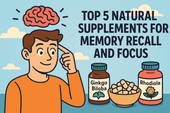
How to Build a Daily Supplement Routine for Memory Health
Want to sharpen your memory and stay mentally clear? Learn how to build a daily supplement routine for memory health — from morning focus to nighttime brain repair. Discover science-backed nutrients that boost recall, focus, and long-term cognitive resilience. 🧠🌿
-
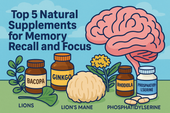
Top 5 Natural Supplements for Memory Recall and Focus
Looking to boost memory and concentration naturally? Discover the top 5 supplements — Bacopa, Ginkgo Biloba, Lion’s Mane, Rhodiola, and Phosphatidylserine — that enhance focus, recall, and long-term brain health. 🧠✨
-
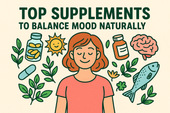
Top Supplements to Balance Mood Naturally
From omega-3s to adaptogens, discover the top natural supplements proven to support emotional balance, reduce stress, and promote inner calm — safely and effectively. 🌿✨
-
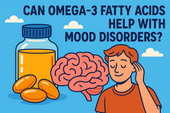
Can Omega-3 Fatty Acids Help with Mood Disorders?
Omega-3 fatty acids do more than support heart health — they can help balance mood, reduce depression, and calm anxiety. Discover how EPA and DHA nourish your brain, fight inflammation, and support emotional well-being from within. 🌊🧠
-
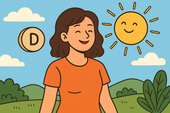
Vitamin D and Mood: The Sunshine Vitamin for Emotional Balance
Could the key to emotional balance be as simple as a little sunlight? Discover how vitamin D — the sunshine vitamin — influences serotonin, reduces inflammation, and helps you feel more positive and resilient year-round. ☀️💛
-

The Role of Magnesium in Reducing Irritability and Low Mood
Feeling on edge or emotionally drained? Magnesium could be the missing link between your body and your mood. Discover how this essential mineral reduces irritability, balances neurotransmitters, and helps your nervous system find calm again. 🌿✨
-
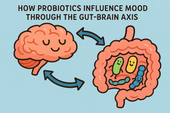
How Probiotics Influence Mood Through the Gut-Brain Axis
Discover how probiotics can do more than support your digestion—they can actually uplift your mood. This article explores the fascinating gut-brain axis and how balancing your gut bacteria through probiotics may help reduce anxiety, improve emotional stability, and support long-term mental well-being. 🌿🧠
-
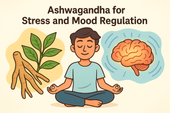
Ashwagandha for Stress and Mood Regulation
Discover how Ashwagandha, the powerful adaptogenic herb 🌿, helps your body manage stress and regulate mood. Learn how it balances cortisol, boosts GABA and serotonin, and supports emotional stability — helping you feel calm, focused, and resilient every day.
-
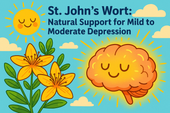
St. John’s Wort: Natural Support for Mild to Moderate Depression
Discover how St. John’s Wort, the “sunshine herb” 🌼, naturally supports mild to moderate depression. Learn how it boosts serotonin, balances mood, and promotes emotional resilience — with research showing its effectiveness compares to antidepressants, but with fewer side effects.
-
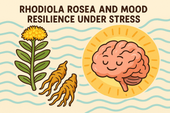
Rhodiola Rosea and Mood Resilience Under Stress
Discover how Rhodiola rosea helps your body adapt to stress 🌿. Learn how this powerful adaptogen balances cortisol, supports serotonin and dopamine, and strengthens emotional resilience — helping you stay calm, focused, and energized under pressure.
-
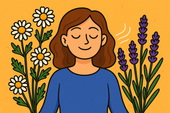
Chamomile and Lavender: Herbal Calm for Emotional Fluctuations
Discover how chamomile and lavender bring calm to emotional ups and downs 🌿. Learn how these two soothing herbs balance your nervous system, ease anxiety, and support restful sleep — naturally helping you find peace and emotional stability.
-
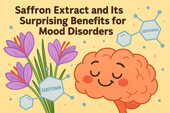
Saffron Extract and Its Surprising Benefits for Mood Disorders
Discover how saffron extract — the golden spice of joy 🌸 — can naturally support mood balance, ease anxiety, and lift mild depression. Learn what science says about its serotonin-boosting power, the ideal dosage, and how this ancient remedy compares to modern antidepressants.
-
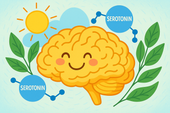
5-HTP and Serotonin: A Natural Path to Lifting Mood
Discover how 5-HTP naturally boosts serotonin 🌞 — the neurotransmitter behind mood, sleep, and emotional balance. Learn how this plant-derived compound supports happiness, reduces anxiety, and improves rest by helping your brain create more serotonin the gentle, natural way.
-
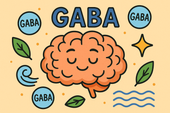
GABA Supplements for Reducing Anxiety and Mood Swings
Discover how GABA supplements can help reduce anxiety and balance mood naturally 🌿. Learn how this calming neurotransmitter works to quiet the mind, ease stress, and improve sleep — plus which nutrients and habits can boost your body’s own GABA production for long-term emotional stability.
-
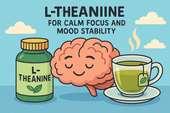
L-Theanine for Calm Focus and Mood Stability
Discover how L-theanine, the calming compound found in green tea 🍵, promotes focus, relaxation, and mood stability. Learn the science behind how it balances neurotransmitters, reduces stress hormones, and enhances clarity — helping you stay centered, calm, and productive without sedation.
-
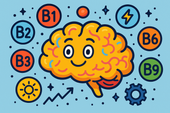
B Vitamins and Brain Chemistry: Supporting Energy and Emotional Balance
Discover how B vitamins power your brain chemistry ⚡. Learn how B6, B9, and B12 support serotonin, dopamine, and energy production — helping boost focus, mood, and emotional balance. From diet to supplements, explore how this vital nutrient group keeps your mind resilient and your energy steady.
-

N-Acetyl Cysteine (NAC) and Mood Disorders: What the Research Says
Learn how N-Acetyl Cysteine (NAC) supports brain health and mood balance 🧠. Discover how this antioxidant helps reduce oxidative stress, regulate glutamate, and improve emotional stability in depression, bipolar disorder, and anxiety — backed by cutting-edge psychiatric research.
-

Supplements for Bipolar Disorder: What May Support Stability
Discover the best supplements for bipolar disorder 🌿 that may support emotional stability and brain health. Learn how nutrients like omega-3s, magnesium, vitamin D, and NAC can help reduce inflammation, balance neurotransmitters, and complement traditional treatment safely.


















































